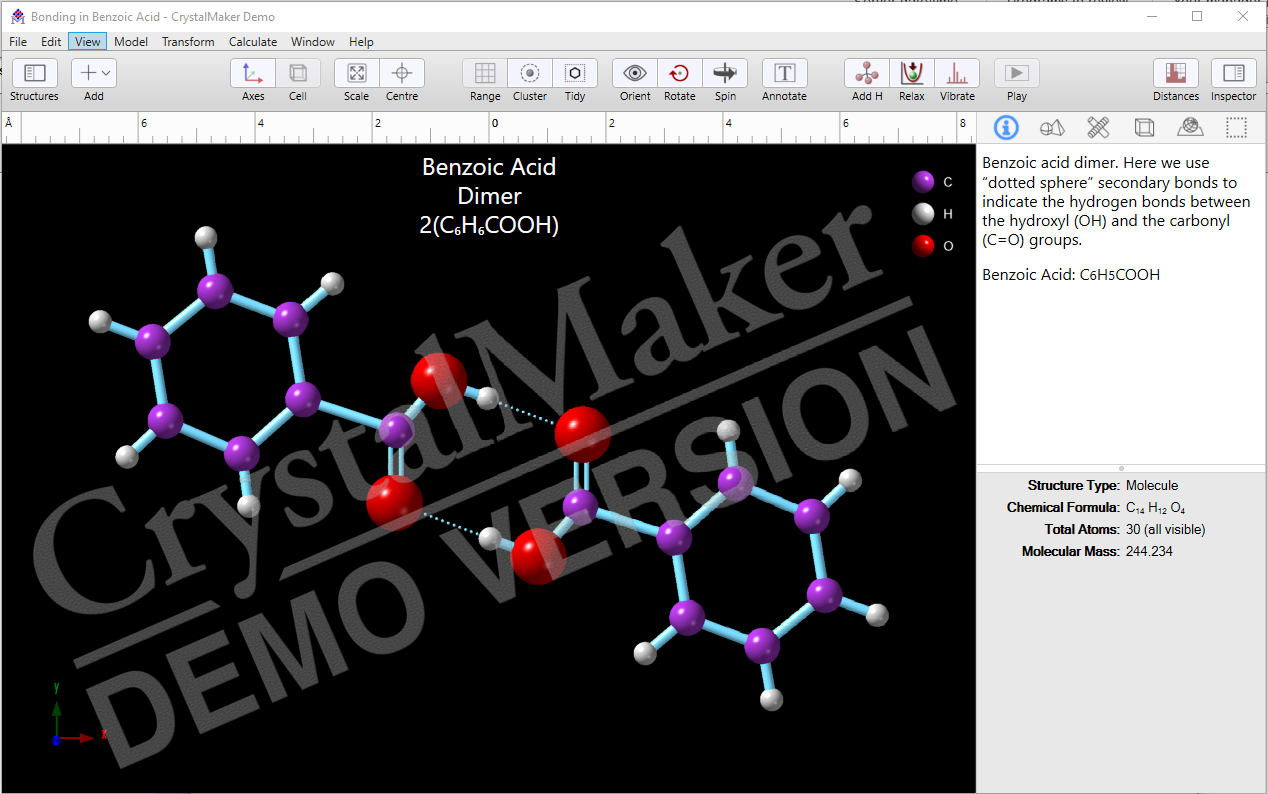
- VIEWING MULTIPLE UNIT CELLS IN CRYSTALMAKER HOW TO
- VIEWING MULTIPLE UNIT CELLS IN CRYSTALMAKER REGISTRATION
- VIEWING MULTIPLE UNIT CELLS IN CRYSTALMAKER SOFTWARE
The structural data can be exported to VASP POSCAR format by File → Export Data and choosing VASP as the file format. Not BCC, since BCC structures have the same element in the corners of the unit cell as well as the center of the body. Now I can go back to the structure parameters window (Edit → Edit Data → Structure parameters), select one O atom, Delete, and Apply. The supercell structure is finalized when I click “Apply” in the Edit Data window: I choose “Search atoms in the new unit-cell…”. Determining the crystal structure parameters of a material is an important issue in crystallography and material science.
VIEWING MULTIPLE UNIT CELLS IN CRYSTALMAKER HOW TO
When I click “OK”, VESTA asks how to convert the structure. In this case, I take the new supercell size to be (3 a, 3 b, 2 c). CrystalMaker lets you transform the unit cell, changing the lattice type. Multiple unit cells can be merged into a single unit cell, thanks to the new. Multiple View bookmarks and undo levels encourage exploration and discovery. This can be done by going to the “Unit cell” tab, clicking “Transform”, and modifying the Rotation matrix. CrystalMaker is a program for building, displaying and manipulating all. To simulate a more dilute system, I need to prepare a bigger unit cell, i.e, a supercell, before creating a vacancy. This results in a rather high concentration of vacancies, i.e., one vacancy in every conventional unit cell. Now I see 6 distinct atoms when I go back to the “Structure parameters” tab.Īt this point, I can select one of the O atoms in this list, click “Delete”, and create an oxygen vacancy. This can be achieved by going to the “Unit cell” tab and clicking the “Remove symmetry” button. I will be inserting a vacancy so I need to remove the symmetry. There are only two symmetry inequivalent sites listed. The coordinates can be found by going to the menu Edit -> Edit Data -> Structure Parameters. Since I want to simulate an oxygen vacancy, I need to delete an oxygen atom from the model. one that can be generated by periodic repetition of a simple unit cell. Once the structure is loaded, it’s fun to click and drag the model around to get a feel for the structure. Display and manipulation of isolated molecules and periodic systems (Unix and MS.

Display of file name, unit cell, lattice vectors, and perspective view is.
VIEWING MULTIPLE UNIT CELLS IN CRYSTALMAKER SOFTWARE
You can drag the file from Explorer or Finder or whatever onto the VESTA window, or you can go File → Open. complicated software with multi-purpose and advanced graphics, e.g., CMX. There are several choices for orientation of the crystallographic axes here I choose conventional standard. To obtain the structure file, click on “CIF” on the right-hand side. there are seven crystallographic unit cells of crystals. The space group of tetragonal ZrO 2 is P4 2/nmc, so I chose that. the background in chemistry and crystal structures to see the value. While this is a reasonable approach, in crystal simulations there will be many minima around the densely packed proteins, and perhaps not enough. The tLEaP program adds ions to simulation cells near the minima of the solute's electrostatic potential field. Add small and abunant species such as water last.

VIEWING MULTIPLE UNIT CELLS IN CRYSTALMAKER REGISTRATION
Go to, log in (you need to register to use this site registration is free of charge), and use the Materials Explorer interface to search for structures containing O and Zr. When adding multiple types of solvent, we recommend the following strategy: Add rare species such as ions first, and scatter them throughout the simulation cell. Here I decided to use the Materials Project. There are now many databases available that provide structure information in standard file formats, so that should be a good starting point. Here, I examine how I can use VESTA (tested with version 3.4.0) to create a supercell model for simulating an oxygen vacancy in tetragonal ZrO 2. In some complex cases, it is also the most excruciating and difficult step. So you do something like: public class MyAdapter extends RecyclerView.Preparing an atomistic model is the first and perhaps the most important step in using first-principles simulation for materials research. and angles of the three dierent structures were compared with each other. Just implement getItemViewType(), and take care of the viewType parameter in onCreateViewHolder(). In fact in Zn(CN)2 there are 8 RUMs per wave vector because the unit cell.


 0 kommentar(er)
0 kommentar(er)
